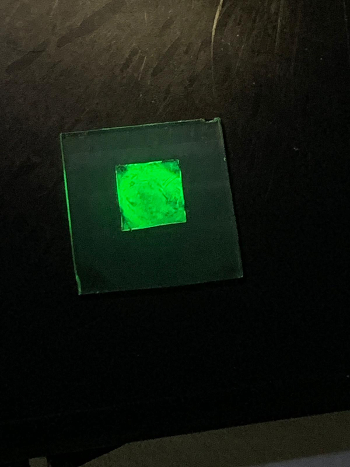This website uses cookies so that we can provide you with the best user experience possible. Cookie information is stored in your browser and performs functions such as recognising you when you return to our website and helping our team to understand which sections of the website you find most interesting and useful. More information in our Privacy Policy
Solar fuels
Photo-electrochemical reduction of carbon dioxide
Principal investigators: Alessandra Sanson, Nicola Sangiorgi
Involved personnel: Linda Bergamini, Alex Sangiorgi, Angela Gondolini, Elisa Mercadelli
The increasing energy demand and the related increasing emission of greenhouse gases (CO2) in the atmosphere due to fossil fuels are some of the main current challenges. A unique solution to these problems is to capture and remove carbon dioxide from the atmosphere and its transformation into fuels (or basic chemical products) through processes induced by sunlight. By combining the effect of sunlight with the use of electric current (photo-electrocatalytic reactions) makes the whole process more efficient than conventional technologies. This approach is made possible through the use of photo-electrochemical cells (PEC) based on electrocatalytic or photo-electrocatalytic electrodes.
At CNR-ISTEC the activity is focused on the production and characterization of low-cost perovskite electrodes materials used as both active layers and systems for harvesting sunlight. In particular different materials based on CsPbBr3, CaCu3Ti4O12 and Ba4Ti3O12 are studied and their properties are modulated through doping or replacement of elements. Films with an engineered surface are then prepared using scalable techniques and additive manufacturing processes. The electrodes thus obtained are then thoroughly characterized from the structural, optical, morphological and electrochemical point of view, correlating the new structures obtained with their properties. Finally, their ability to photo-activate or catalyze CO2 conversion reactions through photo-electrochemical devices (PEC) is evaluated. The obtained reaction products (solar fuels) are analyzed through chromatographic techniques in order to obtain efficiencies and selectivity properties of the materials tested.
Equipment and processes
The materials are initially prepared in the form of powder through the traditional sol-gel or chemical synthesis processes (solid-state or through precipitation reactions also mediated by microwave or IR heating). Subsequently, these materials are used for the production of films (electrodes) using processes such as screen printing, spin or dip-, spray- coating or additive manufacturing techniques (ink-jet or microextrusion). The electrodes are completely characterized by the electrochemical and photo-electrochemical point of view (capacity of moving charges, electrical conductivity, produced currents) through the Autolab PGSTAT302N + FRA32M electrochemical working station and the relative optical bench. In order to determine the electronic properties of these materials in detail, Electrochemical Impedance Spectroscopy (EIS) is considered. The optical and light absorption properties are evaluated through the integrating sphere of the PVE300 system (both in reflection and transmission mode). Finally, the photo-reduction reactions of CO2 are carried out in a special PEC using the light emitted by the solar simulator (SUN2000 Abet Technologies) and similar lighting systems.

Main partners
- Università di Bologna
- Istituto di Chimica della Materia Condensata e di Tecnologie per l’Energia (CNR-ICMATE)
- Istituto di Chimica dei Composti OrganoMetallici (CNR-ICCOM)
- Loughborough University
Projects
Publications
- N. Sangiorgi, G. Tuci, A. Sanson, M. Peruzzini, G. Giambastiani, “Metal-free carbon-based materials for electrocatalytic and photo-electrocatalytic CO2 reduction”, Rendiconti Lincei, Scienze Fisiche e Naturali 2019, 30, 497-513
